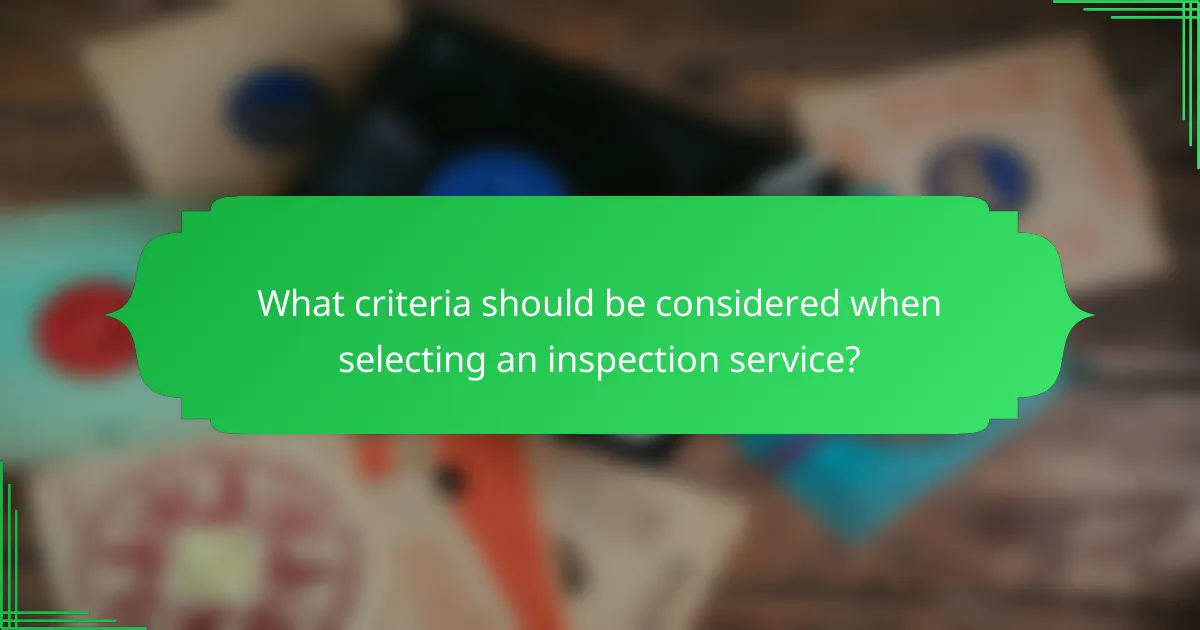Seasonal inspections are a crucial part of maintaining the safety and efficiency of your home or business, with average costs ranging from $100 to $300. Conducting these inspections at least twice a year, preferably in spring and fall, helps prepare your systems for changing weather conditions. By planning ahead and establishing a clear budget, you can effectively manage the costs associated with these essential services.

What are the average costs of seasonal inspections in the US?
The average costs of seasonal inspections in the US typically range from $100 to $300, depending on the type of inspection and the services included. Regular inspections are essential for maintaining equipment and ensuring safety, making it a worthwhile investment for homeowners and businesses alike.
Average cost range
Seasonal inspection costs can vary significantly based on the specific service being performed. For example, HVAC inspections usually fall between $100 and $200, while plumbing inspections may range from $150 to $300. It’s advisable to budget for these costs annually to avoid unexpected expenses.
Factors affecting costs
It’s important to ask for a detailed estimate before scheduling an inspection. This will help you understand what is included and allow you to compare prices among different service providers.
Regional price variations
Costs for seasonal inspections can vary by region due to differences in labor rates and demand for services. For instance, inspections in urban areas may be more expensive than in rural regions. In the Northeast, you might pay higher rates for HVAC inspections compared to the Midwest.
Researching local service providers and reading reviews can help you find competitive pricing in your area. Additionally, some regions may have specific regulations that could affect inspection costs, so it’s wise to be aware of local standards.

How often should seasonal inspections be conducted?
Seasonal inspections should typically be conducted at least twice a year, ideally in spring and fall. This frequency helps ensure that systems and structures are maintained and prepared for the upcoming weather changes.
Recommended frequency
For most properties, conducting seasonal inspections twice a year is advisable. This schedule allows for timely identification of issues that could worsen over time, such as wear and tear on roofing or HVAC systems. Some homeowners may opt for quarterly inspections, especially in areas with extreme weather conditions.
Seasonal considerations
Seasonal changes can significantly impact the condition of your property. In spring, inspections should focus on checking for winter damage, including roof leaks and gutter blockages. In fall, it’s essential to prepare for winter by inspecting heating systems and sealing drafts to enhance energy efficiency.
Impact of climate on inspection frequency
Climate plays a crucial role in determining how often inspections should occur. In regions with harsh winters or heavy rainfall, more frequent inspections may be necessary to address potential damage from snow or flooding. Conversely, areas with mild climates may require less frequent checks, potentially reducing costs associated with inspections.

What budgeting tips can help with seasonal inspections?
Effective budgeting for seasonal inspections involves planning ahead and understanding potential costs. By setting a clear budget, employing cost-saving strategies, and allocating an emergency fund, you can manage expenses more effectively.
Setting a budget
Begin by estimating the total costs associated with seasonal inspections, which can vary based on the type of inspection and your location. For instance, a home inspection may range from $300 to $500, while vehicle inspections might cost between $50 and $100. Consider creating a detailed list of all potential expenses to ensure nothing is overlooked.
Factor in both regular inspections and any additional services that may arise. This proactive approach helps you avoid surprises and allows for better financial planning throughout the year.
Cost-saving strategies
To save on inspection costs, consider scheduling inspections during off-peak seasons when prices may be lower. Additionally, bundling services, such as combining a home inspection with pest control, can lead to discounts. Research local providers to find competitive pricing and read reviews to ensure quality service.
Utilizing DIY inspections for minor checks, such as smoke detector functionality or basic plumbing, can also help reduce costs. However, always consult professionals for more complex inspections to avoid costly mistakes.
Emergency fund allocation
Setting aside an emergency fund specifically for inspections can provide peace of mind. Aim to save at least 10-15% of your estimated inspection costs to cover unexpected repairs or additional services that may arise during the inspection process.
Regularly review and adjust your emergency fund based on your inspection history and any changes in service costs. This practice ensures you are financially prepared for any surprises, making seasonal inspections less stressful and more manageable.

What are the benefits of regular seasonal inspections?
Regular seasonal inspections provide essential upkeep for properties, ensuring they remain safe, functional, and valuable. These inspections help identify potential issues early, allowing for timely repairs and maintenance that can save money in the long run.
Preventive maintenance
Preventive maintenance involves regularly scheduled inspections that can catch minor issues before they escalate into major problems. For instance, checking the roof for leaks or inspecting HVAC systems can prevent costly repairs later. Aim to conduct these inspections at least twice a year, ideally before the onset of extreme weather.
Creating a checklist for seasonal inspections can help ensure that no critical areas are overlooked. Common items to include are gutters, plumbing, electrical systems, and appliances. This proactive approach can extend the lifespan of your property’s components.
Increased property value
Regular seasonal inspections can significantly enhance the value of a property by maintaining its condition and appearance. A well-maintained home is more attractive to potential buyers and can command a higher selling price. Properties that show signs of neglect may deter buyers or lead to lower offers.
Investing in seasonal inspections can be seen as a form of asset protection. Keeping up with maintenance not only preserves value but can also lead to a more favorable appraisal when it comes time to sell. Consider documenting all inspections and repairs to showcase your property’s upkeep to prospective buyers.
Safety enhancements
Safety is a paramount concern for any property owner, and regular seasonal inspections play a crucial role in identifying hazards. Inspections can reveal issues such as faulty wiring, mold growth, or structural weaknesses that could pose risks to occupants. Addressing these problems promptly can prevent accidents and injuries.
To enhance safety, focus on critical areas such as smoke detectors, carbon monoxide detectors, and fire extinguishers. Ensure these devices are functional and up to date. Regular checks can help maintain a safe living environment, providing peace of mind for residents and visitors alike.

What criteria should be considered when selecting an inspection service?
When selecting an inspection service, consider the provider’s qualifications, customer feedback, and cost transparency. These factors will help ensure you choose a reliable service that meets your needs and budget.
Service provider qualifications
Check the qualifications of the inspection service, including certifications and experience in the field. Look for providers who are certified by recognized organizations, as this often indicates adherence to industry standards.
Additionally, inquire about the inspector’s training and experience. A qualified inspector should have a solid background in relevant areas, such as building codes, safety regulations, and specific inspection techniques.
Customer reviews and ratings
Customer reviews and ratings provide insight into the quality of service offered by an inspection provider. Look for feedback on platforms like Google, Yelp, or specialized review sites to gauge overall customer satisfaction.
Pay attention to recurring themes in reviews, such as punctuality, thoroughness, and professionalism. A service with consistently positive reviews is more likely to deliver a satisfactory experience.
Cost transparency
Cost transparency is crucial when selecting an inspection service. Ensure that the provider offers clear pricing structures, including any potential additional fees for specific services or follow-up inspections.
Request a detailed estimate before committing to the service. This should include a breakdown of costs and any terms and conditions related to the inspection process. Avoid providers who are vague about their pricing, as this can lead to unexpected expenses later on.
